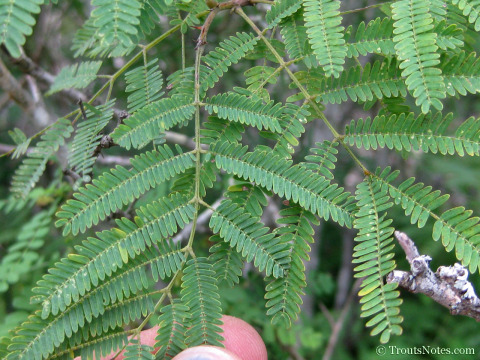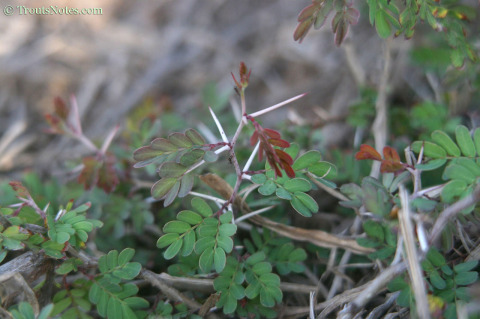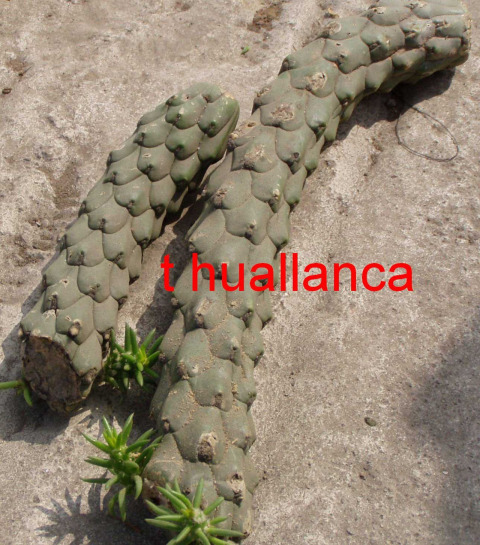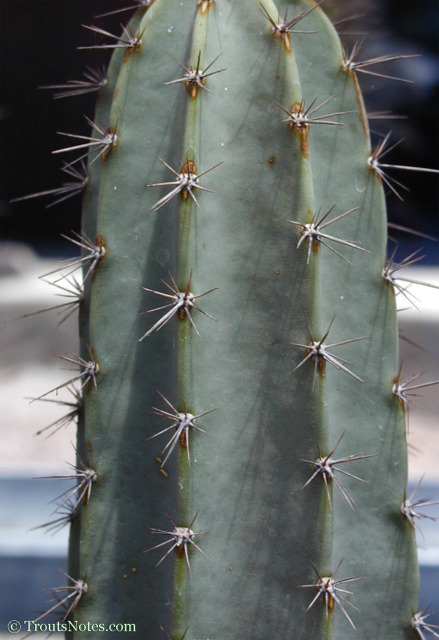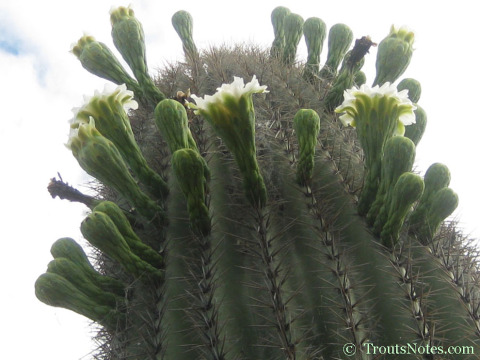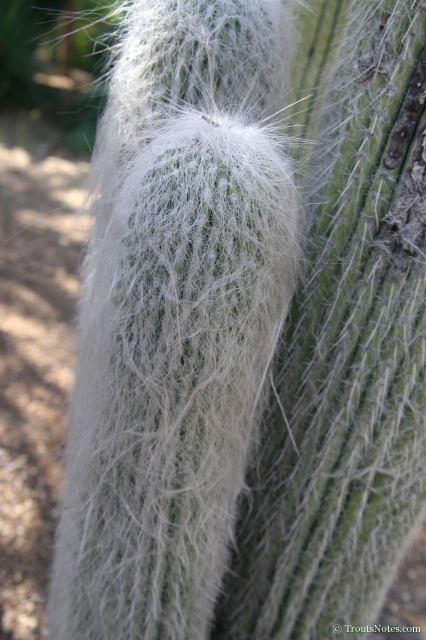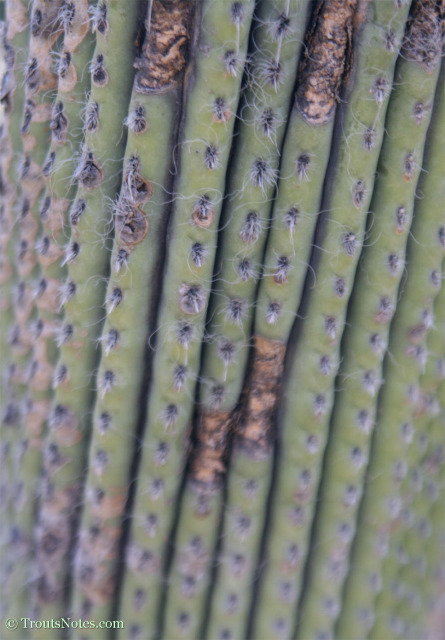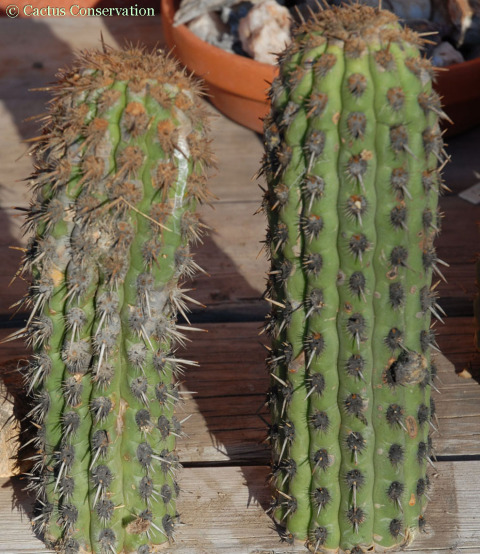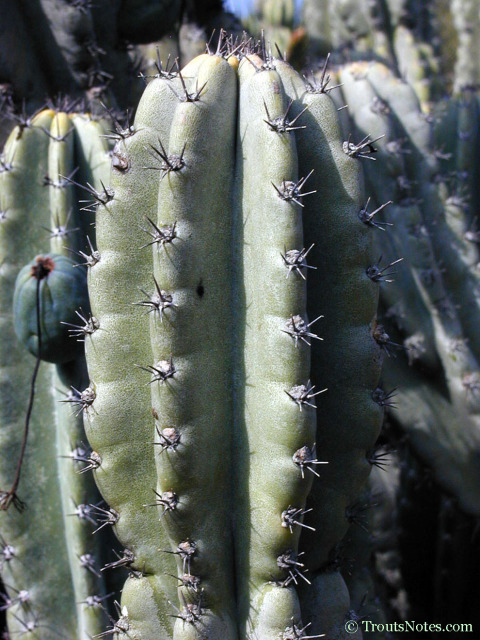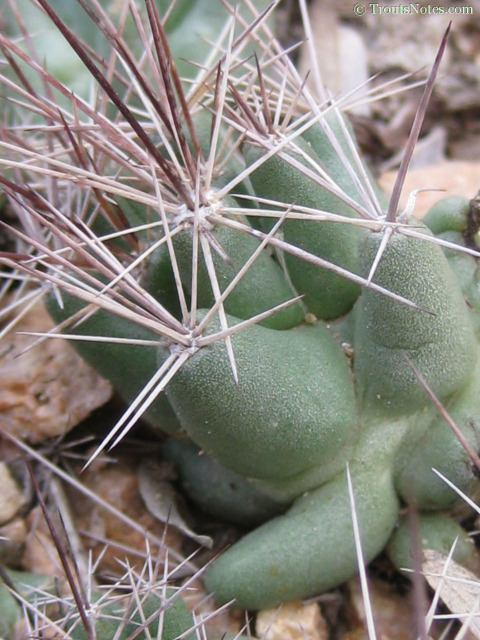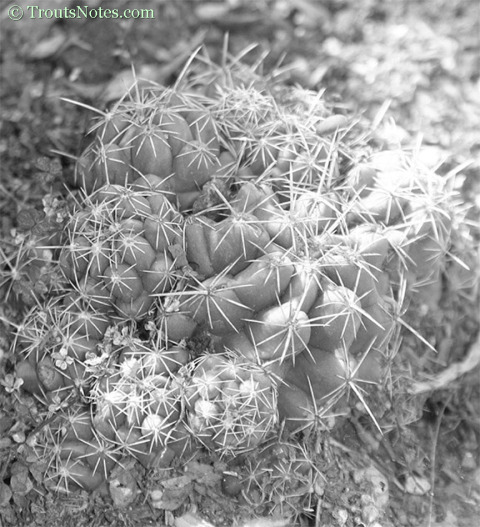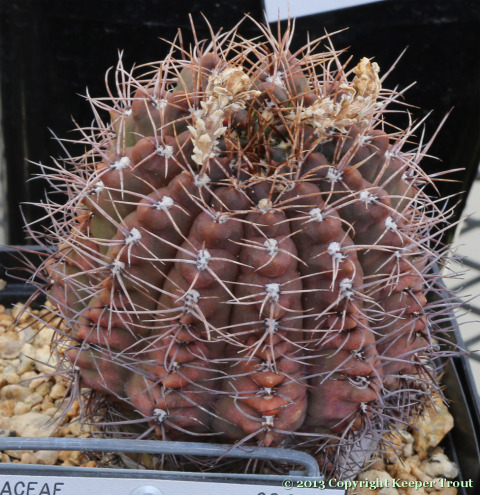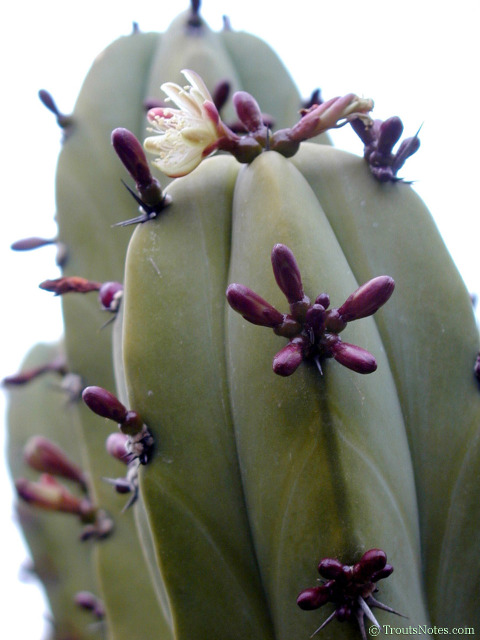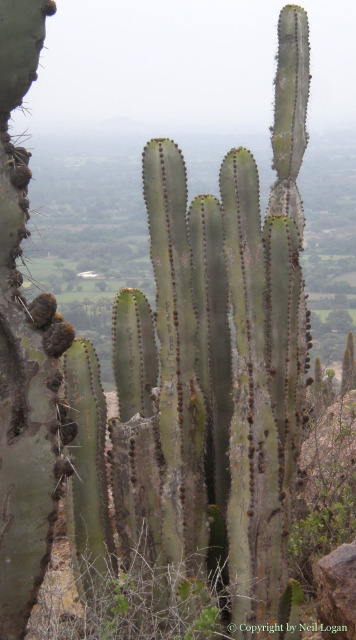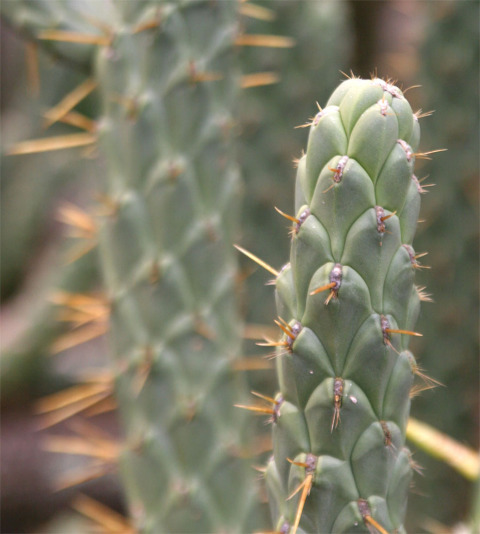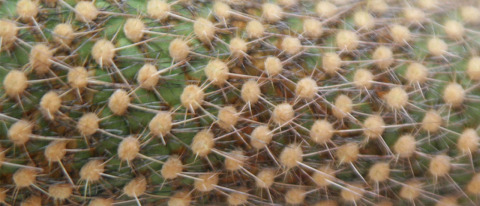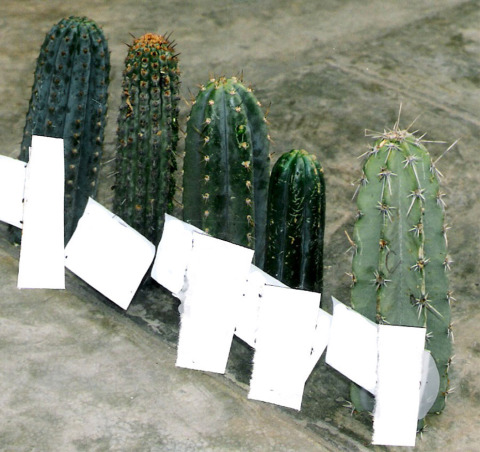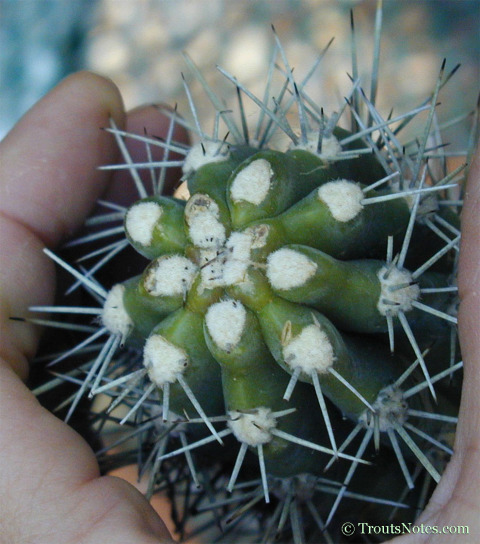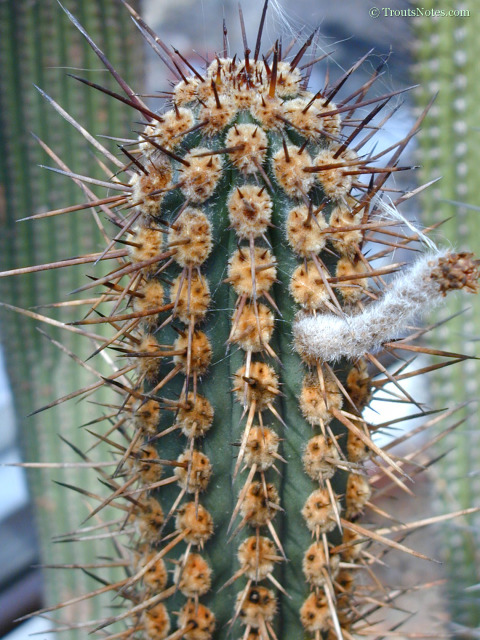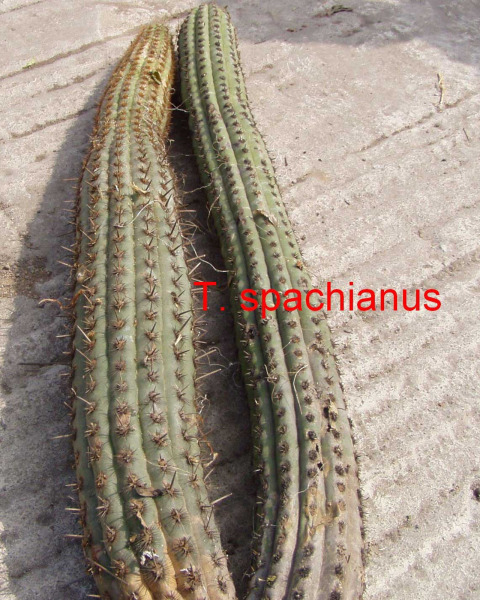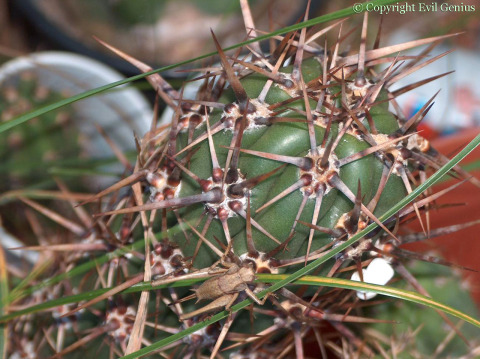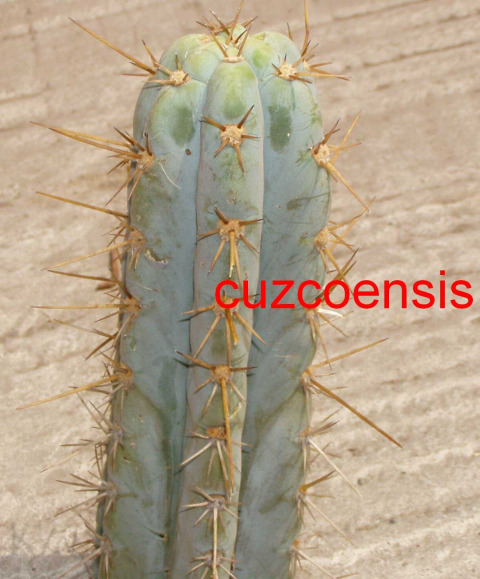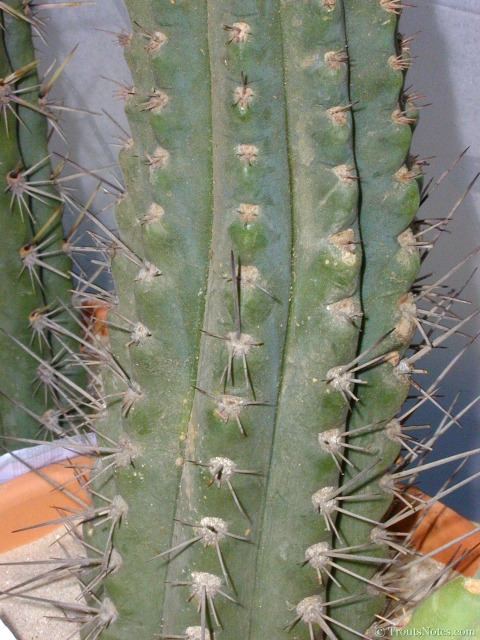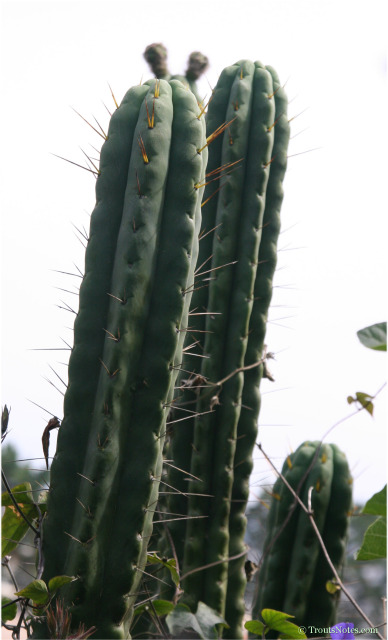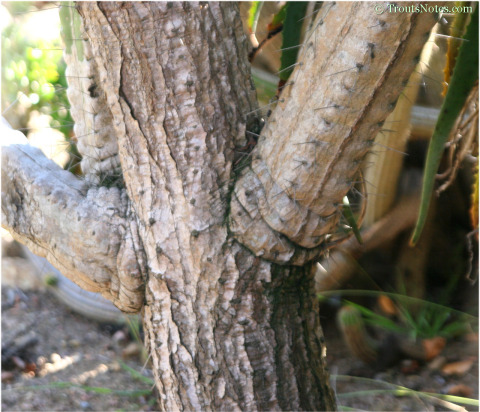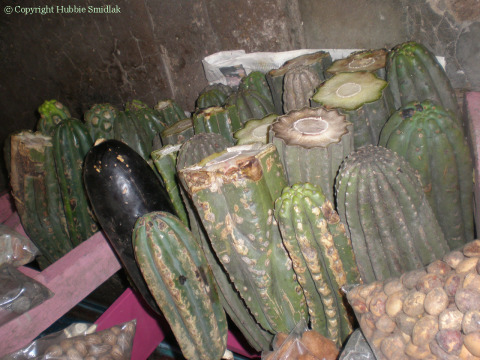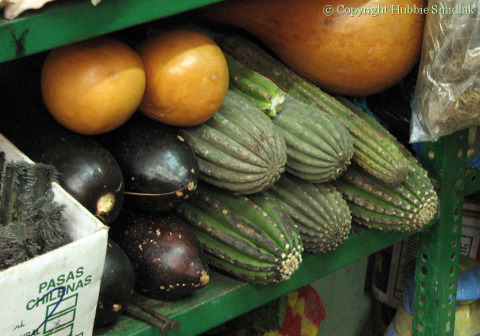Known errors, unknowns and questions
The following are some unanswered questions, including concerning a couple of reports about trace amounts, and the assorted known errors that have been encountered in the literature or online mistakenly asserting the presence of mescaline.
There is also a couple of additional cacti included that are in need of some comment concerning questions they present.
These are not discussed in detail within this work (that can be found in Sacred Cacti part C, section 2 Cactus Chemistry By Species [PDF]) but I wanted to create a summary of them here for the convenience of the reader.
Abraham Caycho Jimenez’s claims in particular should be viewed with caution due to his lack of verifiable references and wealth of misspellings.
In this presentation, I have decided to alter what existed in the book Sacred Cacti. The reason being these entries partially overlap with the corresponding species entries in Cactus Chemistry By Species.
As that book is also coming to this webpage in its entirety (and is already online in PDF form) it made more sense to recombine all of the longest examples of those particular entries into a single entry each in Cactus Chemistry By Species. Those will be linked to from this re-edited page that can serve as an illustrated overview. Until that web addition is complete please use the PDF version of that work.
There also is no point in creating a citation list dignifying the wealth of claims asserting variously that either all cacti contain trace amounts of mescaline or else all of the Trichocereus species contain trace amounts of mescaline. That is clearly an erroneous comment, at best.
Only a relatively few cactus species show trace amounts of mescaline, even fewer produce isolatable quantities of mescaline and only a relative few actually contain useable concentrations of mescaline. I have no doubt that more remain to be discovered but right now the cactus species which are known to contain pharmacologically meaningful amounts of mescaline number less than a dozen out of nearly two thousand cactus species. Similarly the number of genera presently known to have members which are capable of producing useable concentrations of mescaline is two out of more than a hundred.
Acacia berlandieri
Acacia rigidula
There are problems in these accounts which raise questions about the actual validity of Clement’s claims for mescaline in these two legumes. More noteable has been the failure of other workers, whether before or after Clement, to replicate their reported results. [Summary of the reported chemical analysis for these two species and a more detailed discussion.]
Descriptions, characteristics & illustrations:
Acacia berlandieri
Acacia rigidula
Austrocylindropuntia huallanca / huayanca
(Mislabeled as a Trichocereus)
Purported to be a San Pedro from the Matucana region with no further information included. Perhaps I am overly cynical but I would wager money that this was being offered to its ethnobotanical distributor entirely as a scam attempting to get them to sell the dried material for $125 a kg.
Armatocereus laetus
Strange and unreferenced comments have appeared asserting the presence of mescaline in this cactus.
They are all erroneous.
An email conversation with Wade Davis and with Dennis McKenna established that the phytochemical analysis alluded to in Davis 1983 had never been performed and that mescaline was not reported.
Some of the claims that it contains mescaline may simply be based on Wade Davis proposing it to be considered a San Pedro cactus that is sometimes used for brew preparation.
This species has also been found to be inactive in unpublished human bioassays. It presently lacks an analysis other than a less-than-ideal screening for alkaloids by Carl Djerassi. Using material that had been wild-collected in Peru, he concluded that it was almost devoid of alkaloids or triterpenes. Djerassi et al. 1955b
See Part. C sect. 2 Cactus Chemistry By Species or Part B San Pedro for more details.
The latter PDF is several years old now so if you encounter problems with it be sure to turn off your PC’s attempts to open it in ‘safe mode’ (the new security default setting in Windows distrusts any file made by a version of Acrobat prior to having the newer security upgrades). If anyone has problems opening this with a Mac let me know. That has been the only conflict reported so far.
Carnegiea gigantea (Engelmann) Britton & Rose
The assertion that mescaline was reported is erroneous.
It has never been found to contain mescaline.
The claim is not supported by any of the references that it included. [i.e. Agurell 1969b, Kapadia & Fayez 1970 J. Pharm Sci. 58:1158, and Mata & McLaughlin 1976 Lloydia 39(6):461.]
It APPEARS to possibly have arisen due to a misreading of a dense paragraph in Agurell 1969b by a worker for whom English was a second language.
A surprising number of analytical reports have been published for saguaro. NONE of them have reported mescaline. See Cactus Chemistry By Species for more details.
Cephalocereus melanostele Vaupel
Cephalocereus sp. (?) Pfeiffer
The claim for the presence of mescaline is made by Caycho Jimenez 1977 (page 91) but no reference was cited and nothing was included to support his assertion.
Cereus acranthus Vaupel — now Haageocereus acranthus (Vaupel) Backeberg
The claim for the presence of mescaline is made by Caycho Jimenez 1977 (page 91) but no reference was cited and he does not include anything to support his assertion.
See more comments under T. cephalomacrostibas below and in Cactus Chemistry By Species.
Cereus peruvianus Haworth
Cereus sp. Miller
The claim for the presence of mescaline is made by Caycho Jimenez 1977 (page 91) but no reference was cited and he does not include anything to support his assertion.
It may be important to recall that pachanoids have historically been sold as Cereus or Cereus peruvianus (including in Peru).
It is however pertinent to note that this claim most likely resulted from Rouhier 1927 (and/or Soulaire 1947’s retelling) who made this claim in print based on comments from Cobo but careful reading will reveal Cobo was actually talking about T. pachanoi.
See more images and some additional details in Cactus Chemistry By Species.
Coryphantha macromeris (Engelmann) Lemaire
Coryphantha runyonii Britton & Rose
Claims for mescaline’s presence in these two species appear in the literature erroneously.
BBB presents Coryphantha macromeris as a mescaline containing cacti for no clear reason; perhaps assuming that rumors of use must mean that mescaline is present?
The first species has been purported to be a mild hallucinogenic plant in its own right.
That particular claim arose in Ott (1976 Hallucinogenic Plants of North America) who cited his own unpublished lab notes and Jerry McLaughlin, unpublished data, as his references. Schultes & Hofmann included Ott’s observation in Botany & Chemistry of the Hallucinogens and in Plants of the Gods. However, in his later works, such as Pharmacotheon, Ott strangely began citing Schultes & Hofmann’s secondary reference (to him!) and ceased to include mention of a reference to either himself or to Dr. McLaughlin.
Bioassay of Coryphantha macromeris produced mild but weird effects followed by persistent after-effects. I certainly have no intention of bioassaying it again.
See more details within the entries for normacromerine and macromerine in Sacred Cacti Part C, section 1, Cactus Alkaloids.
Coryphantha runyonii appears to be listed seemingly for nothing more than being considered to be a varietal form of Coryphantha macromeris.
Neither species has ever been reported to contain mescaline based on analysis or bioassay.
See more images and some additional details in Cactus Chemistry By Species.
There is also an account appearing finding mescaline in a compounded herbal formulation that was shown, through the use of cDNA primers, to contain Coryphantha macromeris. Analysis of actual plant material showed that the mescaline came from a different source and was not from Coryphantha macromeris. The mescaline containing plant source was not identified but the herbal extract was found to additionally contain Turnera diffusa (damiana) and Peganum harmala (syrian rue). Hiroyuki Kikuchi et al. (2010) Forensic Toxicology, 28: 77-83.
Coryphantha palmeri (Engelmann) Britton & Rose (now C. compacta)
Coryphantha radians (A.P.deCandolle) Britton & Rose
Trace amounts of mescaline are seemingly implied to have been detected in these two species but the wording of the account is unclear and does not specifically state it. Gennaro et al. 1996
See some additional details in Cactus Chemistry By Species.
Epiphyllum sp.
The claim for the presence of mescaline is made by Caycho Jimenez 1977 (page 91) but no reference was cited and nothing was included to support his assertion.
See more images and some additional unrelated details in Cactus Chemistry By Species.
Gymnocalycium fleischerianum Backeberg
Mescaline (0.0001-0.001% dry wt.) ?
Štarha 2001c did not include a citation for this information. (Furthermore, G. fleischerianum was included only in the table on p. 91 and not in the ‘by species’ breakdown that was presented earlier in the same work.)
Matucana madisoniorum
An unpublished claim asserting the presence of mescaline was apparently held and voiced by its collector Paul Hutchison. No information exists about why he suspected that might be true but it was probably as simple as its body morphology. Analysis of this species by Sasha Shulgin was unable to detect any type of alkaloid to be present. The material was of a direct lineage from Hutchison’s wild collections and was provided to Sasha by one of Hutchison’s former students. Claims have been voiced suspecting indigenous use but no rationale was included and there does not appear to be any real basis for that suspicion.
See more images and a meager amount of additional details in Cactus Chemistry By Species.
Melocactus peruvianus Vaupel
The claim for the presence of mescaline is made by Caycho Jimenez 1977 (page 91) but no reference was cited and nothing was included to support his assertion.
Additional details are in Cactus Chemistry By Species.
Myrtillocactus geometrizans (von Martius) Console
This species appears in the literature erroneously.
Mescaline is not present.
0.3% dry wt. appears to be listed as being isolated from plants previously used as stocks for grafting Lophophora williamsii but G. Siniscalco Gigiliano contradicts this in his experimental account (Siniscalco Gigliano 1983).
Neoraimondia macrostibas (K.Schumann) Britton & Rose
The claim for the presence of mescaline is made by Caycho 1977 (page 91) but no reference was cited and nothing was included to support his assertion.
I suspect he may have been assuming the presence of mescaline extrapolating from an earlier report by Guttierez-Noriega that it was incorporated into a shamanic brew called cimora. (See additional comments in the Sacred Cacti Part B San Pedro.)
Opuntia (Austrocylindropuntia) cylindrica
The claim for the presence of mescaline was based on Trichocereus pachanoi misidentified as this species. See more details within its entry.
Opuntia pachypus K.Schumann [sic as Opuntia pachiypus]
Opuntia sp.
The claim for the presence of mescaline is made by Caycho Jimenez 1977 (page 91) but no reference was cited and nothing was included to support his assertion. See some images of Austrocylindropuntia pachypus within its miniscule entry.
More unresolved questions concerning some cacti claimed to contain mescaline
More images and detailed comments concerning these (and discussions of the assorted cacti additionally reported or purported to be psychoactive for reasons other than mescaline) can be found in Cactus Chemistry By Species in the section entitled “Activity & Mythology“.)
Five San Pedros
All 5 of these are purported to be known as “San Pedro” and are further claimed to be used by Peruvian shamans for making their brew.
Compare the one on far right to Armatocereus laetus which can be found pictured farther above. And notice the Haageocereus?
At risk of being accused of being cynical, I was struck with an unanswered question as to whether the person assembling the “5 San Pedros” did so based on actually encountering them in use by shamans or if they did so based on their interpretation of the published literature. This same person was also the source of “huallanca” and several other oddities.
More words and many more images can be found in the PDF Cactus Chemistry By Species.
Stenocereus hystrix
There is a claim for the presence of mescaline in something that is being sold under the name Stenocereus hystrix. And there are reports of activity in dried material said to be from this plant (curiously no reports yet from people ingesting material from the cuttings).
That identification appears to be plausible to me (that is an image above) but flowers are needed for a conclusive determination AND there are some odd discrepancies meriting some comments.
It is a commercial ethnobotanical offering purported to be potent with a 20 gram dose of outer tissues (dry weight). Some of the same material was said by the vendor to be weaker due to being harvested after water was abundant.
It is also claimed by its vendor that only one stand of this species is active and that all of the other occurrences in the Dominican Republic are inactive. This last point has caused the supplier to further suggest that it might be a hybrid but it is unclear what they thought it was crossed with or why it being a hybrid would cause it to become mescaline containing.
More work is needed as Djerassi had reported Stenocereus (as Lemaireocereus) hystrix to be devoid of alkaloid. I would feel a lot more comfortable with thinking there may be something to this claim if not for the incredible problems that arose both times when attempting to procure live material to identify and then analyze (in all attempts what came were infected with a rapidly fatal disease; one was already dead upon arrival). Dried material said to be from this species was readily available by comparison. My gut feeling is that it is this CLAIM that probably is in need of some closer scrutiny as, so far as I have been able to determine, both the cuttings and the dried material are produced in the Dominican Republic on the vendor’s behalf by a third-party rather than by the vendor.
An actual entry for Stenocereus hystrix will soon exist but until then, references, more images of authentic Stenocereus hystrix & Djerassi’s meager analytical details can be found within the work Cactus Chemistry By Species.
Trichocereus cephalomacrostibas (Werdermann & Backeberg) Backeberg
[AKA Haageocereus cephalomacrostibas or Weberbauerocereus cephalomacrostibas]
The claim for the presence of mescaline is made by Caycho Jimenez 1977 (page 91) but no reference was cited and nothing was included to support his assertion.
Material appearing similar to this species or Haageocereus acranthus has been purported to be used by Peruvian shamans (Anonymous 2005; see image below that was mislabeled T. spachianus). [See images and additional comments above or in its entry in the PDF Cactus Chemistry By Species.]
Trichocereus cuzcoensis
The species that is properly known by this name has been found to contain no mescaline and small amounts of mescaline (see details in the PDFs Cactus Chemistry By Species and in San Pedro under Trichocereus cuzcoensis).
The plant pictured above is clearly misidentified and is not T. cuzcoensis. I suspect that it might not be a Trichocereus and is some other genera. Commercially available dried outer tissues purportedly from this plant are being reported to contain mescaline based on human bioassays. 20 grams of that dried material is being anecdotally reported to be effective. That said, the attempts to obtain live material for analysis were unsuccessful (from the same source in Peru as the 5 San Pedros) so presently this represents an unaswered question. In light of the wealth of identification problems and misrepresented materials I’d suggest that no analysis should be considered to be meaningful if it lacks access to living material and fails to prepare and retain vouchers for second-party confirmation.
One additional point of potential confusion intersects with Trichocereus cuzcoensis. When the cuttings and lots of dried material (mentioned above) as being more recently sold as Stenocereus hystrix were first offered by their ethnobotanical vendor, they were sold under the name Trichocereus cuzcoensis. That particular material was reported active and mescaline-containing based on human bioassays.
Trichocereus tulhuayacensis Ochoa
The claim for the presence of mescaline is made by Caycho Jimenez 1977 (page 91) but no reference was cited and nothing was included to support this assertion.
The presence of mescaline would be far from surprising but this species presently lacks any analysis or bioassay reports.
Trichocereus sp.
I presently do not know the correct identification of this plant.
It has features that resembles bridgesii, uyupampensis and knuthianus but is not really a nice fit for any.
This plant has been proven to be a mescaline container through human bioassay. Correspondent requesting anonymity.
My none-too-great photos were taken of the plant growing in Tom Juul’s garden just prior to its destruction to prepare space for construction.
Unknown cacti in the Chaclayo market.
The person taking this photograph did not acquire any information about what these plants were sold for. (I am referring to the many ribbed cacti that are displayed with the normal San Pedro tips.)
There is presently no suggestion they contain mescaline and no indication of their intended use. They could have been sold simply for use as a hair rinse as is a common use for other columnar cacti.
There are some assorted loose threads that cause these to be intriguing to me and I would suggest that it would be worth someone following up on this report and learning their intended purpose no matter what that turned out to be. Please let me know and I’ll update this accordingly.


